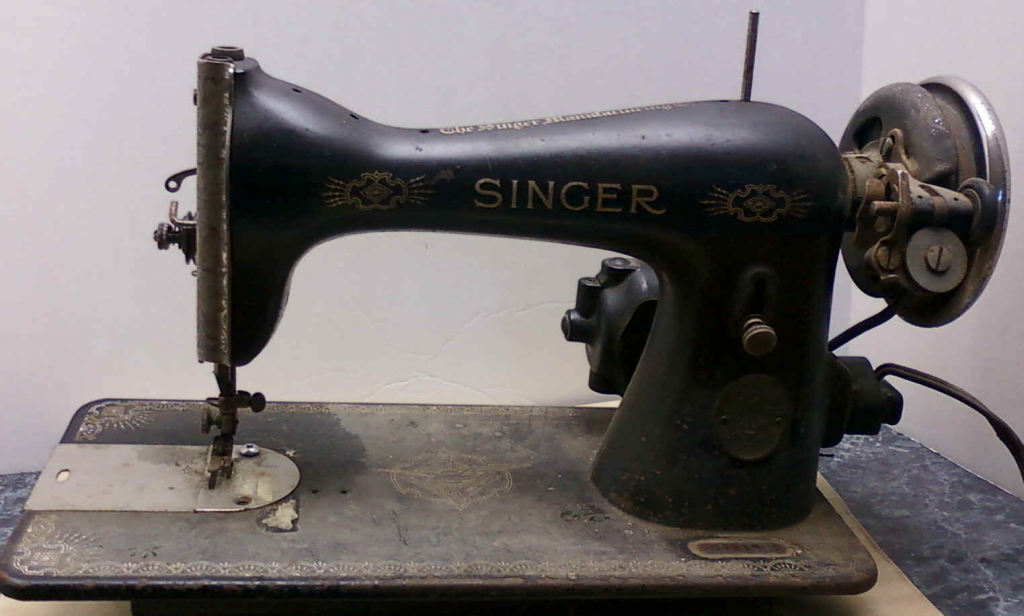
Here are some “before” pictures of a machine that was given to me. It had been removed from its cabinet after cutting the electrical cord.
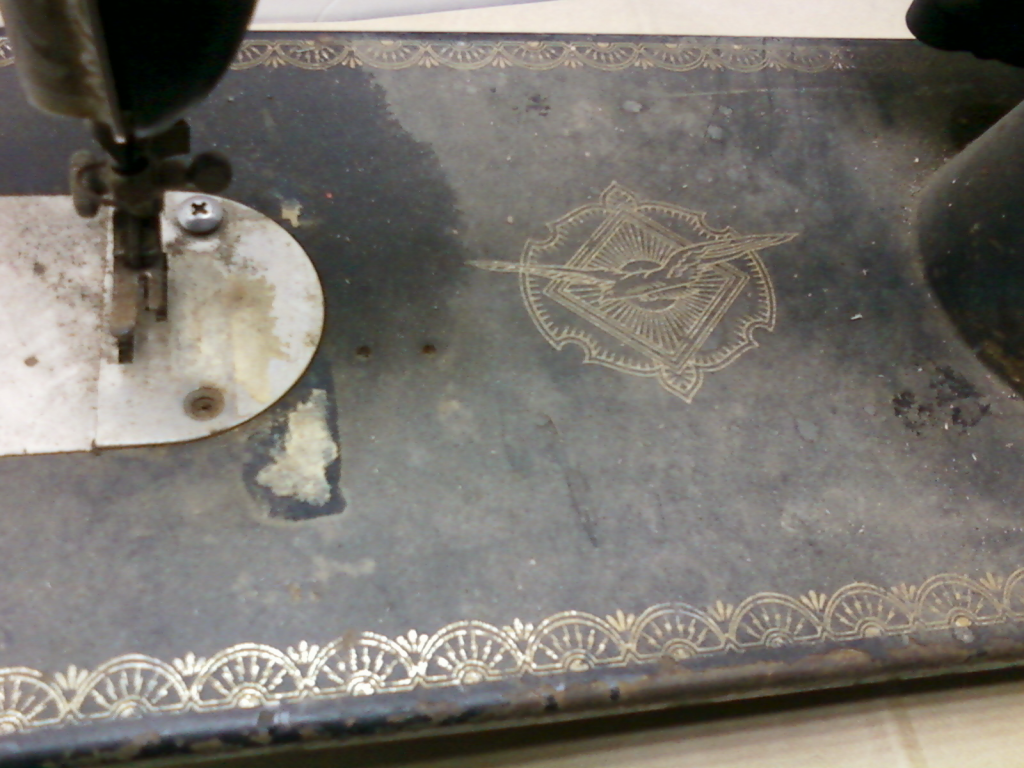
This machine has the coveted RAF (Royal Air Force) decals. You can also see that it unfortunately has a messed up needle plate where someone tried to remove the screws and ended up drilling them out and replacing one with a misfit screw. The other was drilled, but could not be removed. So the owner covered the botched up job with masking tape to hold the plate down.
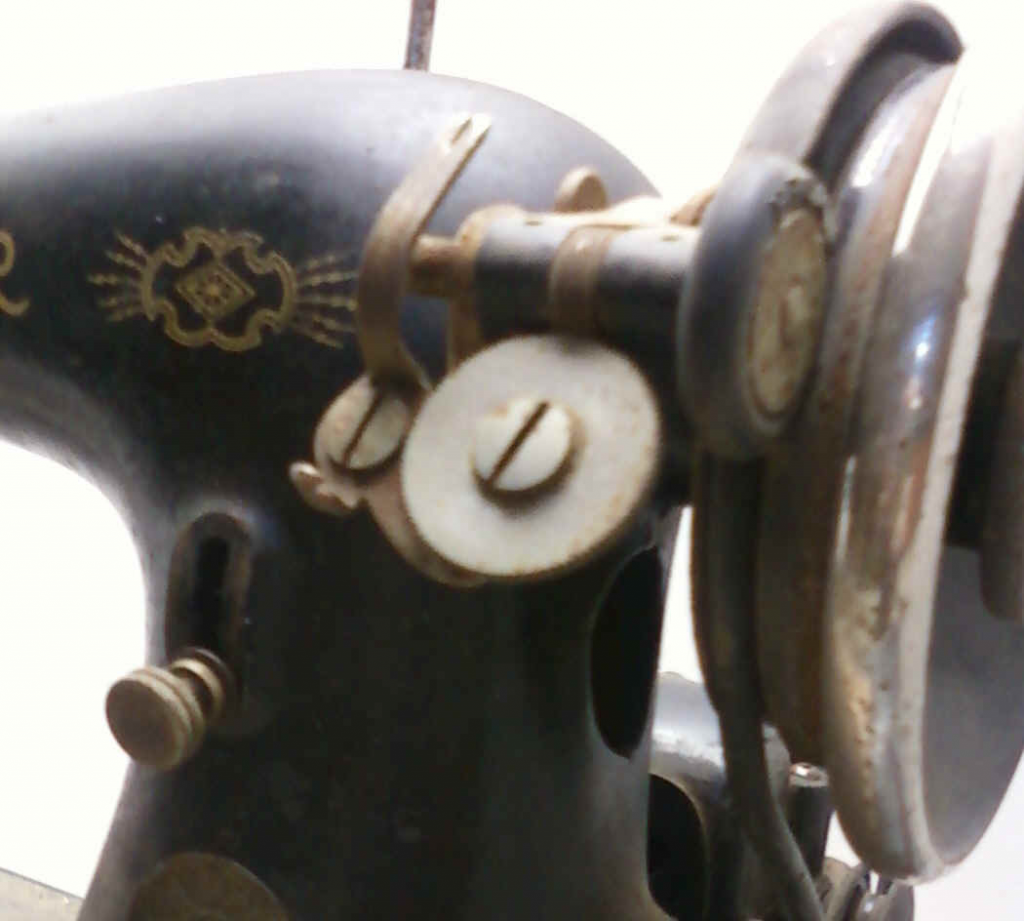
The round cam bobbin winder and the stitch length knob was a clue to its subclass, which is a good thing to know. Because, even though it is a Singer class 15, it takes a different bobbin case than the model 15-88 and 15-90. It, of course was missing its bobbin case.
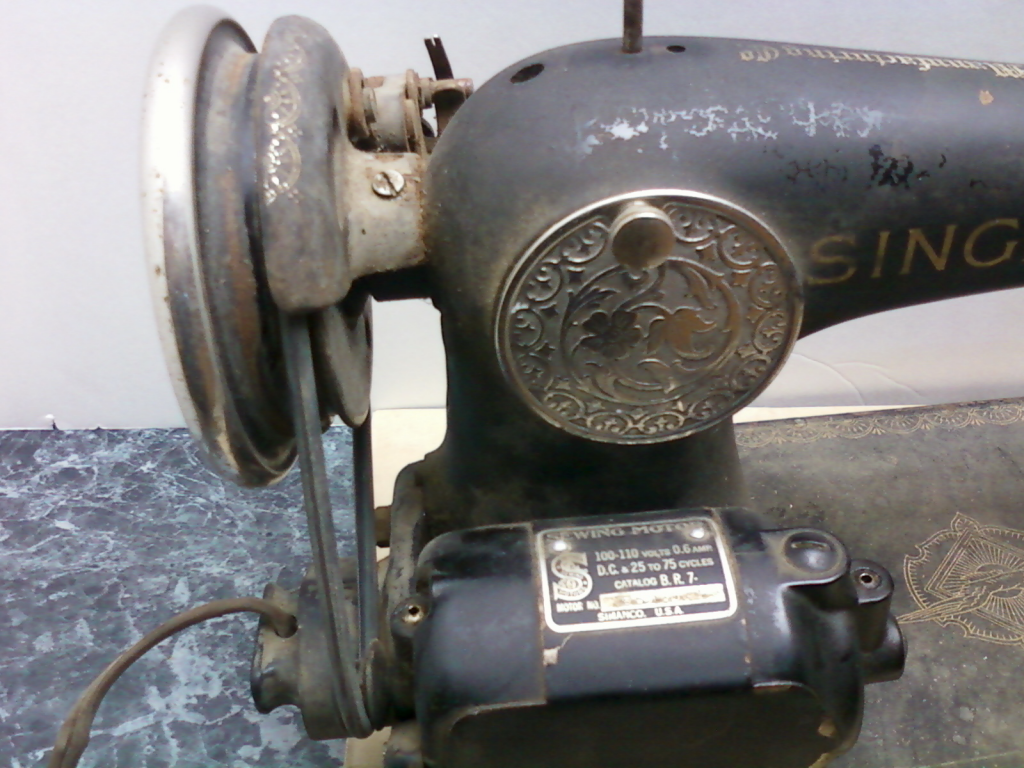
The model 15-30 is supposed to be a treadle or hand crank machine with a spoked handwheel, so I am guessing this motor and the solid handwheel was added after WW2. My husband checked the motor and discovered it runs smoothly, so I will keep the motor that my husband wired to a vintage foot controller for when I prefer to use electrical power.
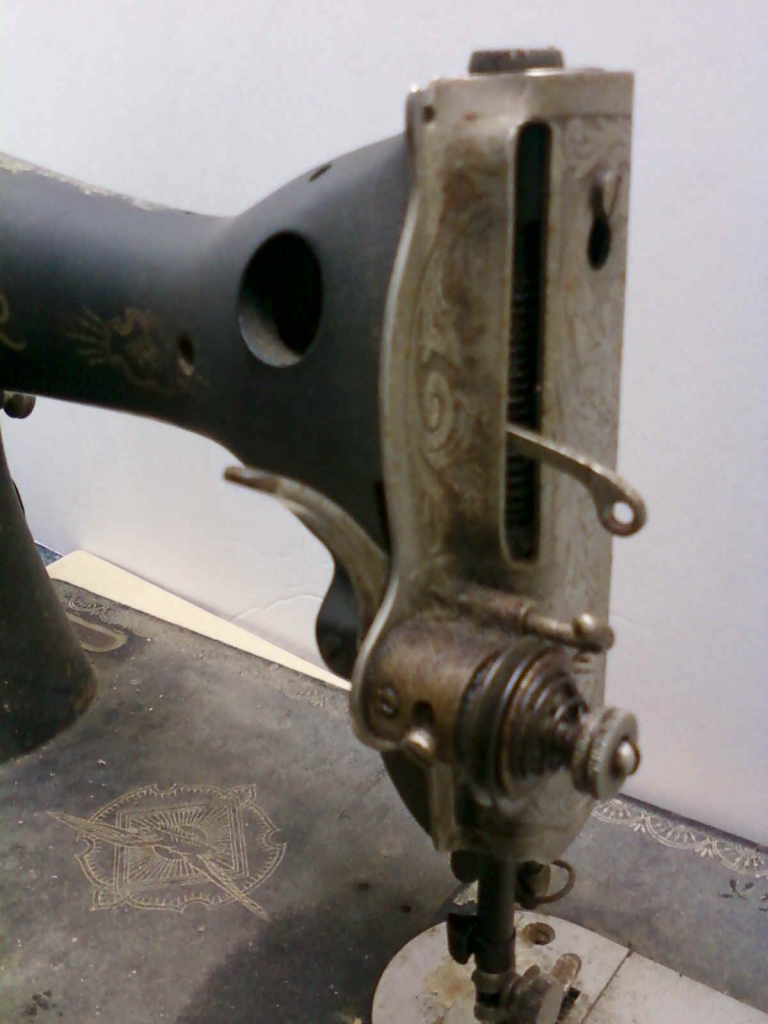
All the metal parts were rusted and the machine was frozen. But for its decals, it might’ve ended up in a landfill.
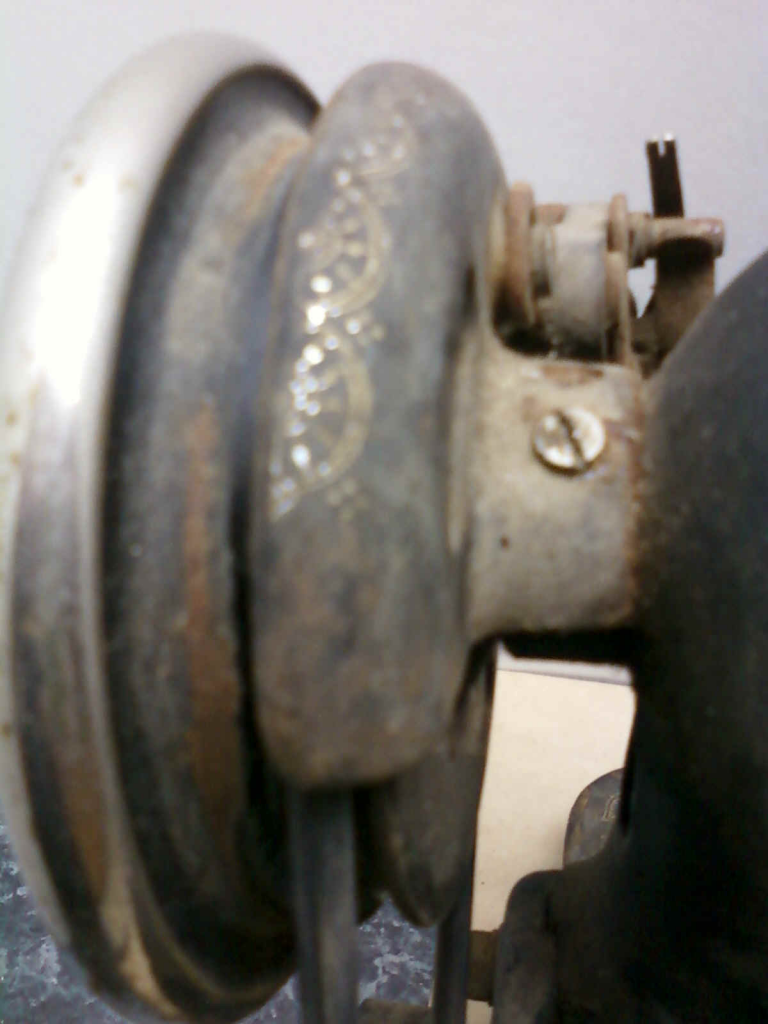
A little oil and the machine soon broke free.
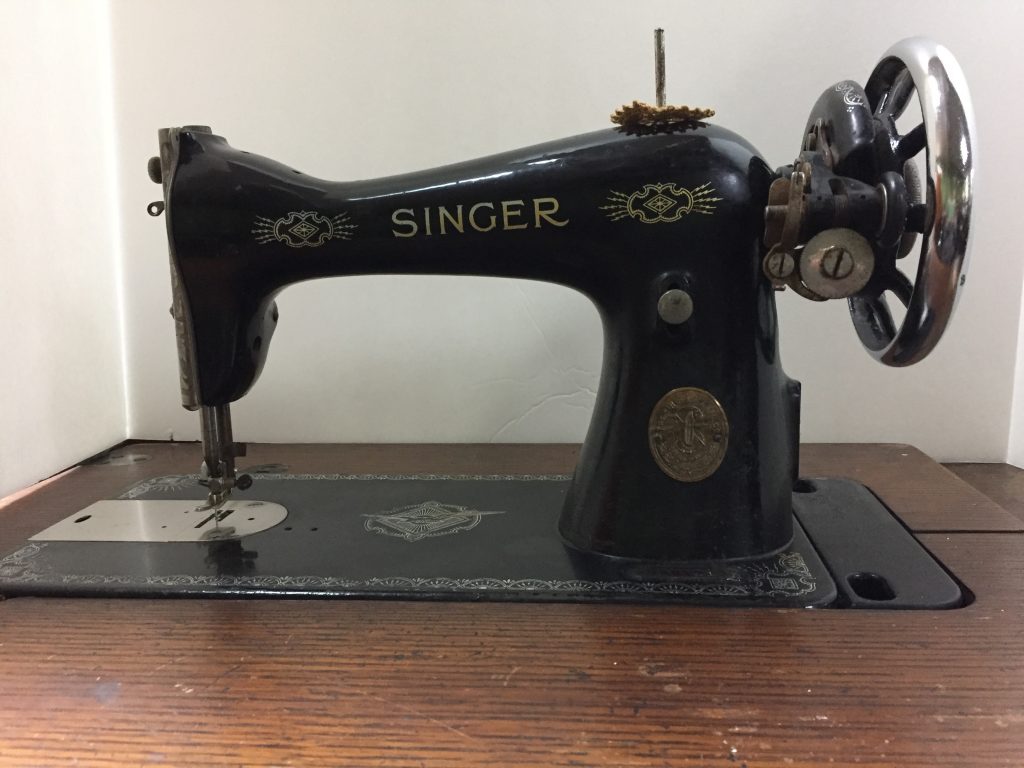
It never ceases to amaze me how easily some of these old machines recover after so much neglect.
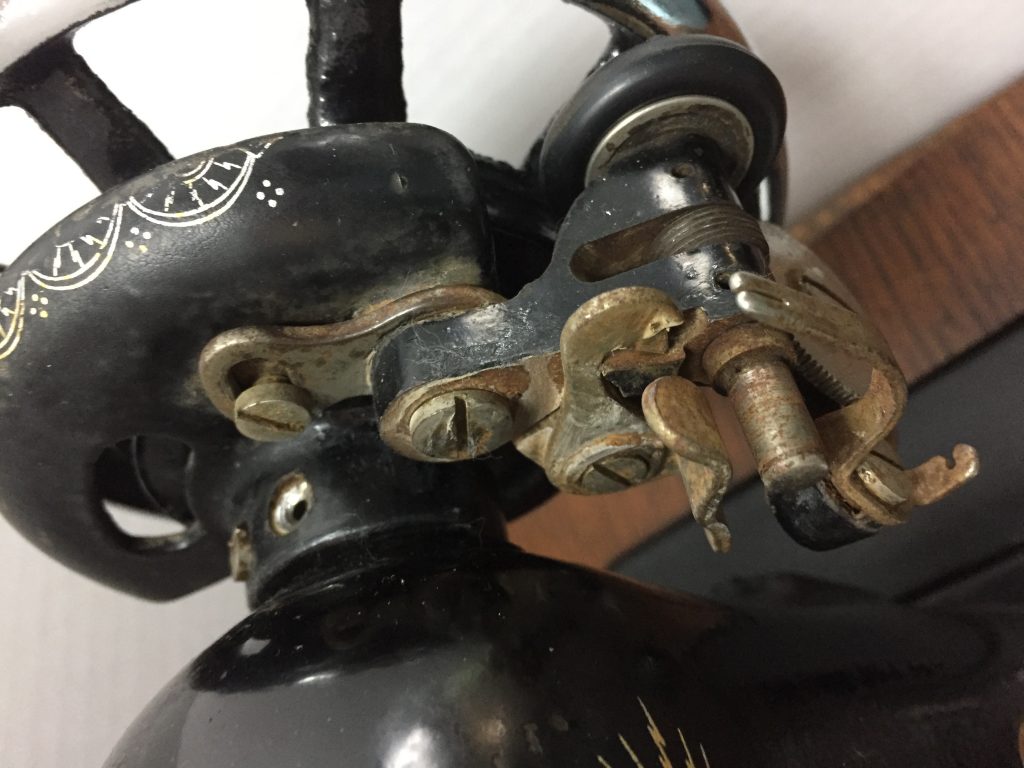
Needs a little more cleaning, but getting there!
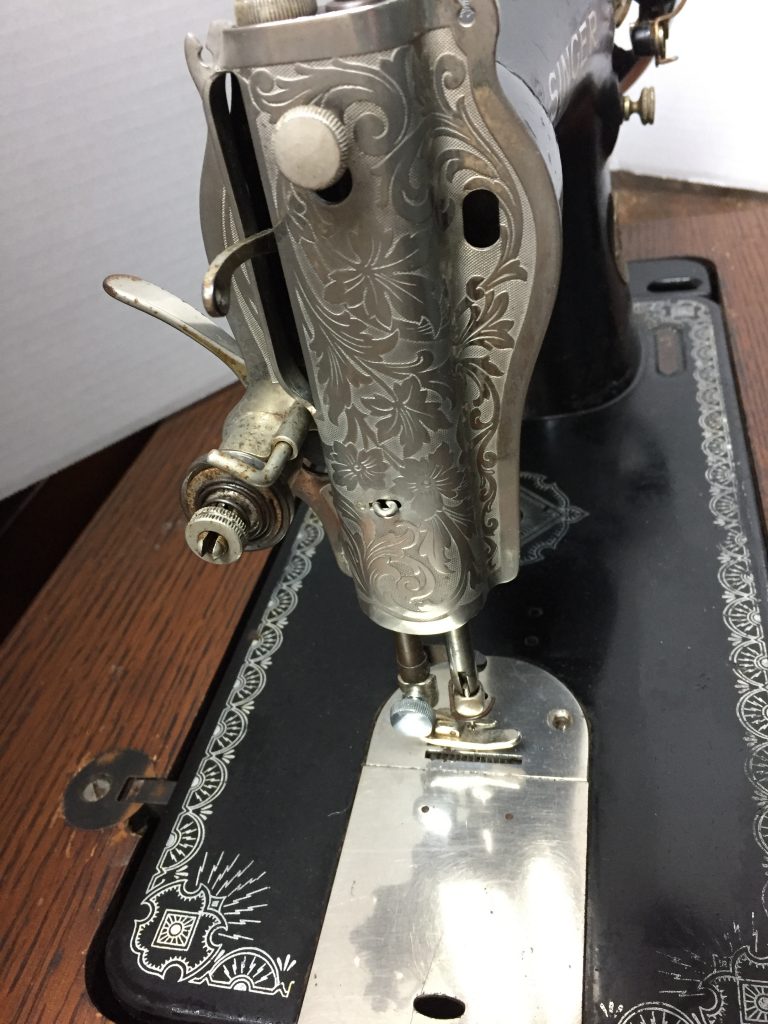
It’s beginning to shine.
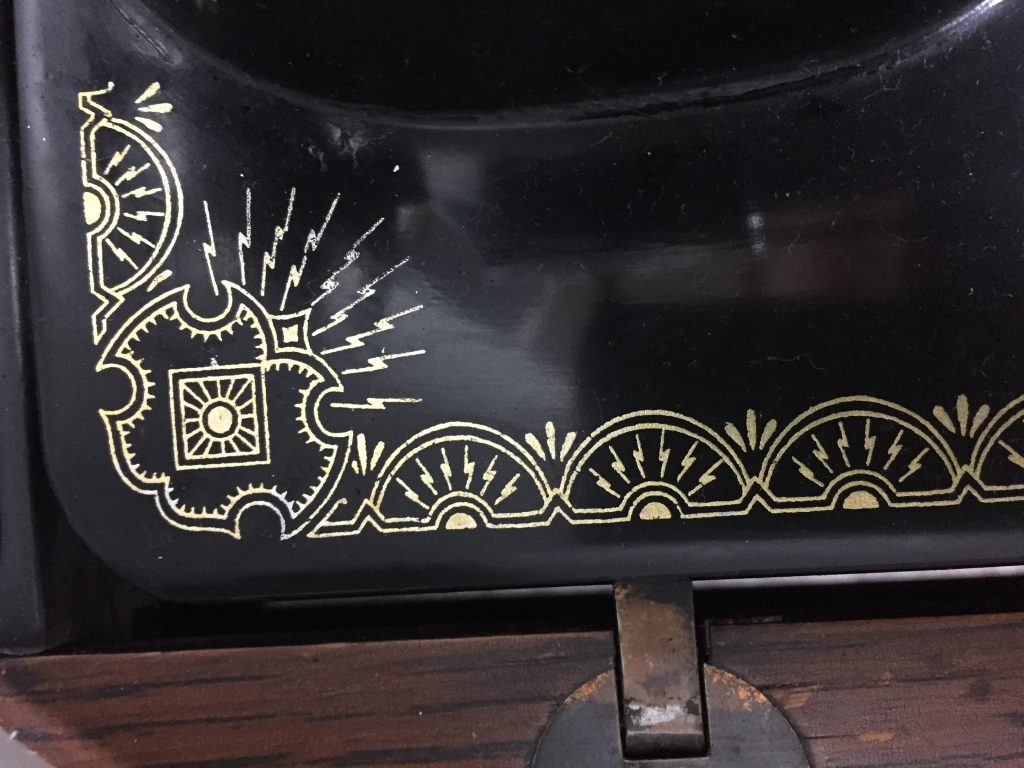
Another view of the beautiful RAF decal set. Although they were already silvered and worn on part of this machine, they are worth saving.

Please time travel to another sewing machine era by clicking the time period button below:
1870-1879 * 1880-1889 * 1890-1899 * 1900-1909 * 1910-1919 * 1920-1929 * 1930-1939 * 1940-1949 * 1950-1959 * 1960-1969 * 1970-1979 * 1980-1989